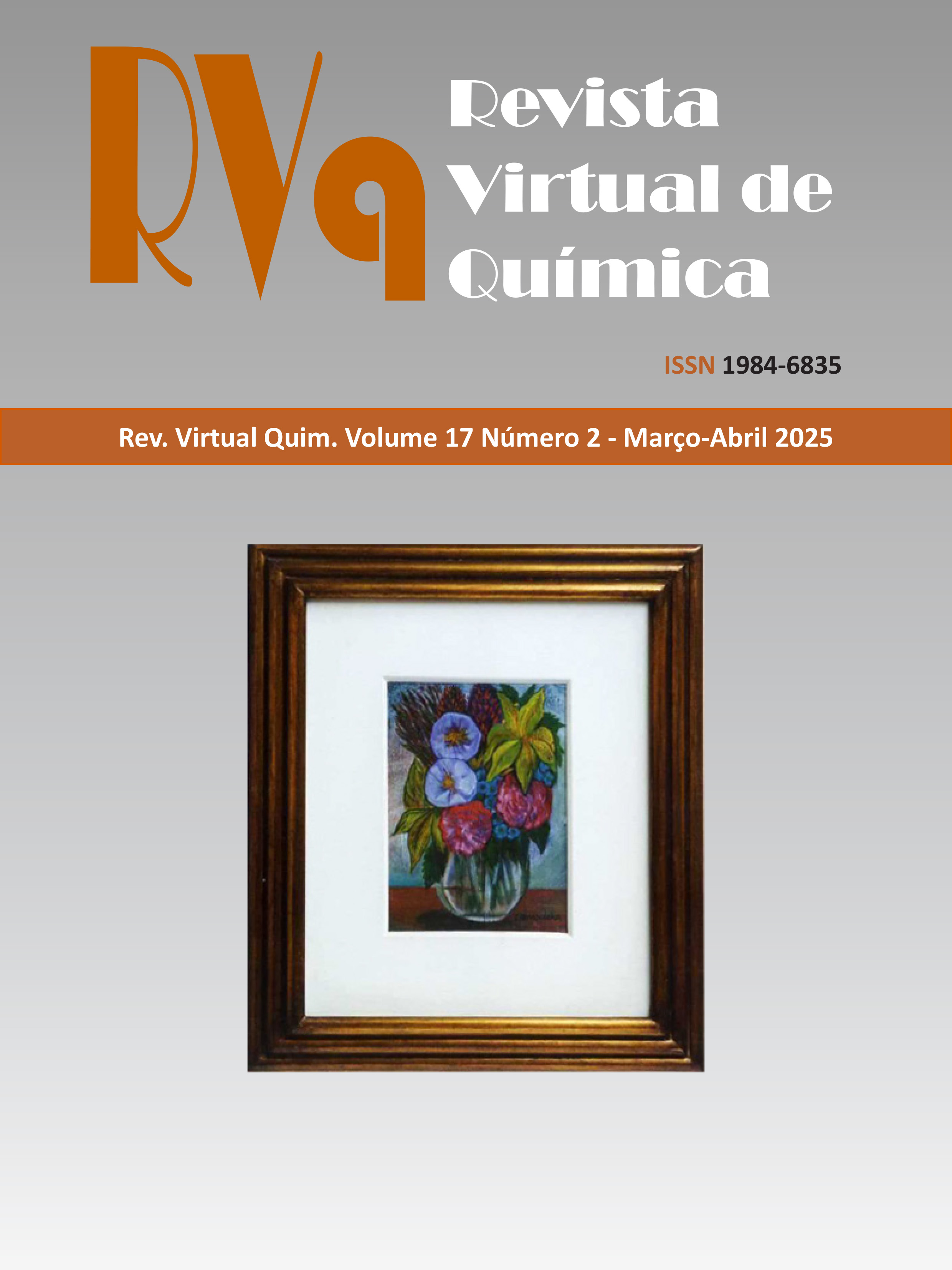Modelagem da Energia de Gibbs de Injeção de Elétrons de Corantes D-π-A Baseados em Trifenilaminas
DOI:
https://doi.org/10.21577/1984-6835.20240070Resumo
In the pursuit of affordable and sustainable energy production, dye-sensitized solar cells (DSSCs) have
become increasingly prominent in recent decades. Among the various sensitizing dyes, those falling into
the D-π-A category utilizing triphenylamine as a donor group have been extensively explored. Since
the effectiveness of electron injection from the dye to the semiconductor constitutes a crucial step in
the conversion of light into electrical current, our goal is to propose models that establish a relationship
between dye characteristics and the Gibbs energy of electron injection, . Developing such models is
significant, as a rapid estimation of a specific molecular property holds immense value, particularly when
the objective is optimization. In this context, this study introduces two Quantitative Structure-Property
Relationship (QSPR) models, derived through multiple linear regression, designed to predict for organic
dyes featuring the D-π-A architecture based on triphenylamine. Both models, labeled as M-1 and M-2,
exhibit a satisfactory fit and predictive capability (RTrain2> 0.70 and RTest2> 0.68). They adhere to other
metrics and tests commonly employed in QSPR model validation, such as y- randomization and rm2. When applied to estimate ∆Ginj for a new set of dyes, both M-1 and M-2 yield satisfactory predictions,
closely aligning with the calculated ∆Ginj.
Downloads
Arquivos adicionais
Publicado
Edição
Seção
Licença
Copyright (c) 2025 Revista Virtual de Química

Este trabalho está licenciado sob uma licença Creative Commons Attribution-NonCommercial-NoDerivatives 4.0 International License.
Autores que publicam nesta revista concordam com os seguintes termos:
Os direitos autorais para artigos publicados nesta revista são do autor, com direitos de primeira publicação para a revista. Em virtude do acesso público, os artigos são de uso gratuito em aplicações educacionais e não-comerciais desde que com reconhecimento da autoria e da publicação nesta revista.

